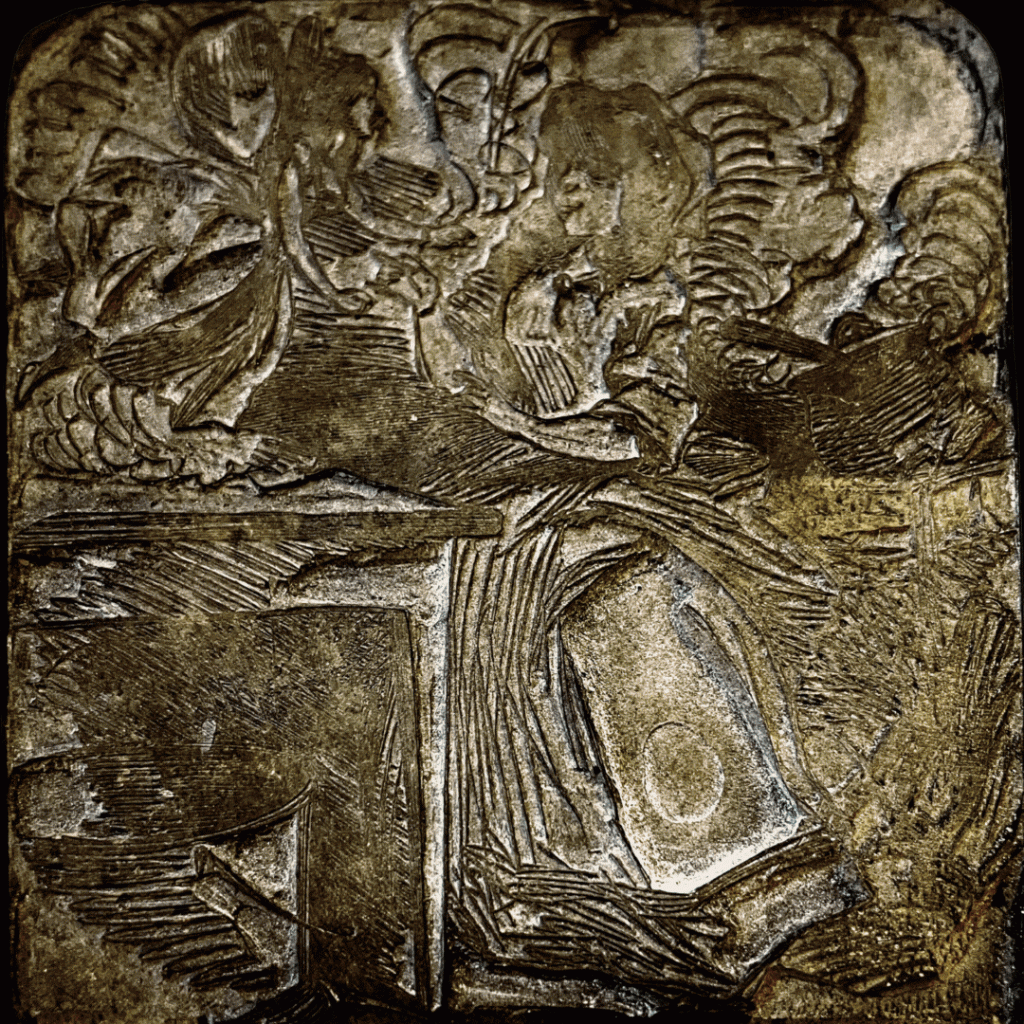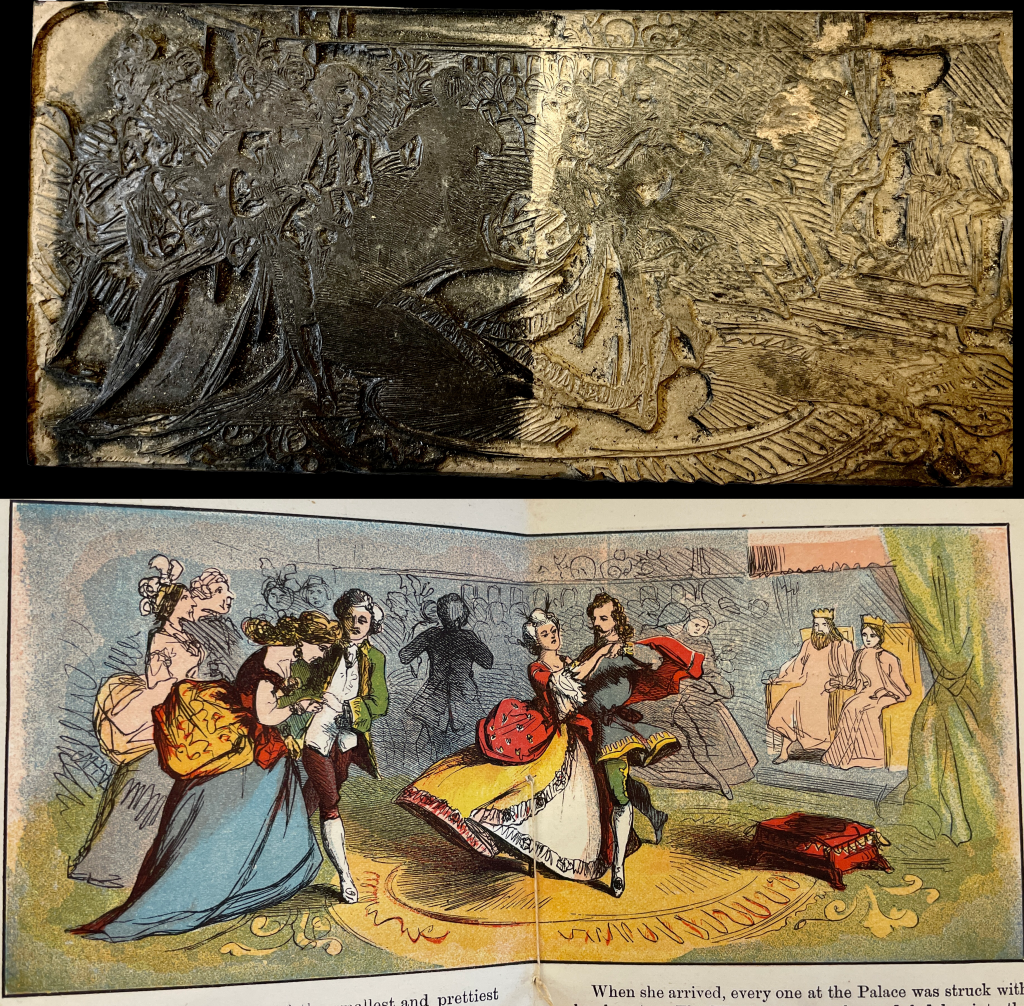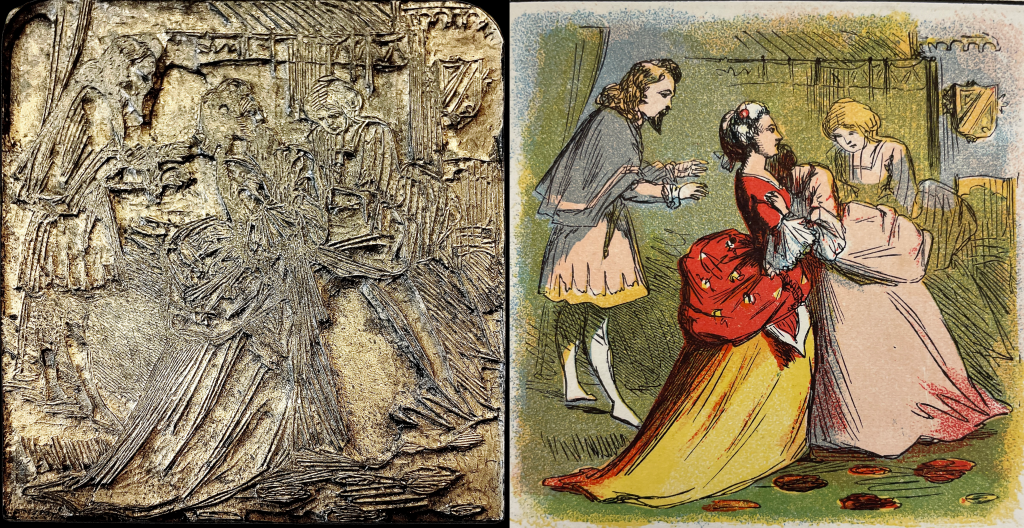Cinderella is a tale of transformation and perception. We are delighted to have in the Sheila Bourke Children’s Collection not only the chapbook Cinderella and the Little Glass Slipper, but also the woodblocks used to print this small, vivid book! Click on the image below to see it come to vibrant colour.

Most of us do not have the training to look at an engraved woodblock and to decipher what image it might produce; we’ve not trained our eyes and brains to flip and invert the image on the block and conceive of what it might look like mirrored. (Evidence of this is perhaps the uncanny feeling of something being wrong that you get when your video is not mirrored in Zoom!) Our brains are used to handling inputs in specific, habitual ways. As these blocks are at least 157 years old, we are not going to be inking and printing them simply to provide more comfortable and familiar off-prints.
Thankfully, photography and a digital fairy godmother can help! By photographing the woodblocks, adjusting the contrast levels, and flipping the images horizontally, I could, with a little effort, match the carved blocks to the final, color print images. You can see the blocks and images layered over each other in the animation above, and a selection side-by-side below.

Cinderella and the Little Glass Slipper was printed, using these blocks, by McLoughlin Brothers, a New York-based printing and card company that rose to prominence in the 1800s. Much like their English competitors and contemporaries Raphael Tuck & Sons in England, McLoughlin shaped the field of children’s publishing in North America at the time. Their vividly colourful toy books, gift books, paper dolls, valentines and cards dominated the Victorian aesthetic for children’s literature at the time. (Read more about Tuck & Sons printing products on the blog here and here).
This book is a great example of McLoughlin’s products at the time: it is well printed in multiple colours, with fairly accurate colour registration for the four colours used in most of the seven colour prints included. It was part of a six-part series that McLoughlin had in production from the 1860s through 1880s, Fairy Moonbeam’s Series. Other titles in this series were also printed in oil, with covers in colour oil and some, though not all, with vibrant colour images inside as well like our edition. All of them could be bought for six cents at book dealers at the time!
The blocks we have in our collection were used by McLoughlin to create at least three different editions of the chapbook. You can see other examples in the American Antiquarian Society’s collections, which they also acquired in 1978 when the McLoughlin materials became available. The blocks’ engraver is not known, but his or her blocks were used for this book, the subsequent editions, and were later purchased in 1978 from bookseller Justin Schiller by notable children’s book collector Sheila Bourke. With others purchased from I. Mackenzie in Montreal in May of 1965, as well as a later addition from St. Nicholas Books in 1993, Sheila Bourke donated these blocks to McGill in 2001, adding three dimentional depth to the already rich collection of chapbooks and children’s books at McGill.
Strangely enough, we have one block that doesn’t appear in the final published chapbook—a scene of the pumpkin-turned-carriage, it seems! We have eight blocks and the final publication has only seven images. So we ask, does anyone have a copy of this chapbook that includes an image of the carriage? Let us know!

See the catalog record at the link in bio, or here: https://mcgill.on.worldcat.org/oclc/191234965
See the full transformations from block to print in the video below












Leave a Reply
You must be logged in to post a comment.